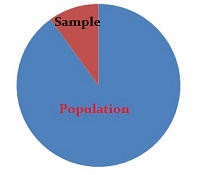Sampling > Maximum Variation Sampling
What is Maximum Variation Sampling?
 Maximum variation sampling is what the name implies: a sample is made up of extremes. or is chosen to ensure a wide variety of participants. Samples collected are typically small (from 3 up to about 50). Above 50 items, quota sampling or a similar non-probability method is simpler to implement and achieves better results.
Maximum variation sampling is what the name implies: a sample is made up of extremes. or is chosen to ensure a wide variety of participants. Samples collected are typically small (from 3 up to about 50). Above 50 items, quota sampling or a similar non-probability method is simpler to implement and achieves better results.
Why is it Used?
Reasons include:
- You want to understand how different groups of people view a specific topic.
- You know little about the population (and so find it difficult or impossible to get a random sample).
- Random sampling is otherwise not practical (because of logistics or a small population).
- You want your sample to be as representative as possible; by sampling the extremes, together they may represent an “average” respondent.
Examples of Maximum Variation Sampling
1. A researcher is conducting a door to door survey to find attitudes towards single parents. During the day, they are more likely to encounter stay-at-home parents and retirees. Therefore, the researchers stagger survey hours for 8 a.m., 4 p.m. and 8 p.m. in order to include a wide variety of people.
2. A researcher is investigating why people don’t complete their prescribed course of antibiotics and thinks that socioeconomic class may be a reason. They survey one rich community, and one poor community.
3. A researcher is studying the volunteer choices of college students. They include students from different socioeconomic backgrounds. The researcher also makes sure too include students of different race, nationality, culture and work experiences.
Even when sampling from extremes (i.e. rich and poor, old and young), the population should otherwise be as homogeneous as possible. For example, if you collect data from rich urban people and poor backcountry dwellers, your sample is likely to be affected by other factors like access to services, public transportation, or job prospects.
Reference:
World Health Organization. Retrieved Jun 22, 2016 from http://apps.who.int/medicinedocs/en/d/Js6169e/7.3.html.